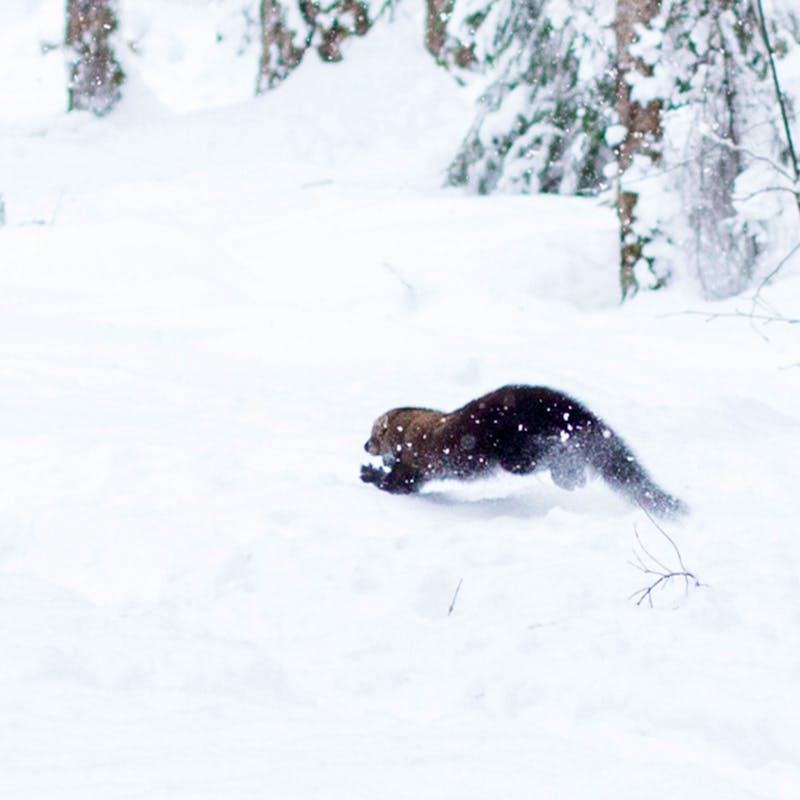Jamie Rappaport Clark, Former President and CEO

Defenders’ former president and CEO, Jamie Rappaport Clark
Anniversaries are often a time for balloons and confetti. Sometimes, though, it takes an anniversary to remind us of a bigger picture and more important message. On March 29, we mark the 15th anniversary of the initial release of Mexican gray wolves from captivity into the wilds of the American southwest. Before you cheer this victory and marvel at how fast time goes by, realize that celebration may be a bit premature. Mexican gray wolves will be in a lot of trouble soon if things don’t change.
In 1998, while serving as the director of the U.S. Fish and Wildlife Service, I was privileged to help release the first group of Mexican gray wolves back into the wild in Arizona. These wolves (lobos, as they are affectionately known) were on the brink of extinction in the mid-1970s. But thanks largely to the work of scientists overseeing captive breeding programs, we were able to release 11 lobos into the Apache National Forest of Arizona.
It was the first time in three decades that wolves roamed wild again in that state. Being there to see the wolves take their first steps into the wild was an unforgettable and moving experience, one that I will carry with me forever. Since then, Defenders of Wildlife and other organizations have worked closely with federal and state wildlife agencies, tribes and local communities to help people coexist with wolves and protect this most endangered creature.

Jamie (left) and former Arizona governor Bruce Babbit (right) carry a mexican wolf to the release site. (©Hans Stuart)
Thanks to these efforts, 75 Mexican gray wolves were recorded in the wild last year. A climb from 11 to 75 is clearly nothing to sneer at, but an underlying crisis warrants placing a big, bold asterisk next to that tally.
All of the Mexican gray wolves in the world today are descended from just seven wolves that began the captive breeding program. Such a limited genetic heritage leaves the lobos with smaller litters of pups, increased susceptibility to disease, and less adaptability to changing conditions. And only three breeding pairs remained in the wild in 2012, further hampering the likelihood of producing offspring. Over the long term, these wolves’ very survival is at risk.
All of this points to a perfect storm of trouble for the beleaguered Mexican gray wolves that will only get worse in the next few years. These wolves have remarkable resiliency, but they can’t do it all alone. They need our help, and this 15th anniversary marks the perfect time to help give them the ultimate anniversary present: a better chance of survival in the wild.
Defenders of Wildlife is calling on the U.S. Fish and Wildlife Service to implement a three-point emergency rescue plan for Mexican gray wolves in order to assure their long-term survival:
- Release more wolves from captivity as the first step in a science-based genetic rescue plan.
- Complete the Mexican gray wolf recovery plan, and implement it.
- Move ahead as quickly as possible to establish at least two additional populations of Mexican gray wolves in the wild.

Captive Mexican gray wolf and pup (©Joel Sartore)
There’s a silver lining here. There are about 300 Mexican gray wolves in captivity at zoos and breeding centers, many of which have yet to breed. If we want to be able to celebrate many more anniversaries of the date of their original release, the Service needs to repeat its actions from 15 years ago by releasing more of these wolves from captivity into the wild.
Mexican gray wolves are an icon of the American southwest. They are near and dear to my heart as well as the heart of many who have invested time and energy into their recovery. The 15th anniversary is an important time to reflect on how far these wolves have come, to be sure. But let’s not just stand by and watch the inevitable decline start to happen. Now is the time to act.
This post also appeared on the Huffington Post.
Click here to take action and urge the USFWS to make Mexican gray wolf recovery a priority!




